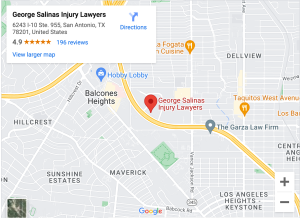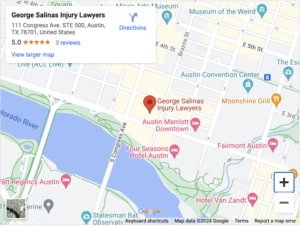Head-on collisions remain the most dangerous type of accident in Texas and across the nation, causing more fatalities than any other type of accident. The Texas Department of Transportation (TxDOT) estimates almost 400,000 collisions between motor vehicles on Texas roads in 2017.
Fortunately, many of these collisions are fender benders that don’t require medical treatment or legal action. Yet, when severe injuries and death occur as a result of a car accident, victims have often been involved in a head-on collision. Accident victims who are lucky enough to live through a head-on crash often face extensive recovery from injury, weeks or months away from work if they can even return to their job, and mounting medical expenses.
If you or a loved one has sustained injuries in a head-on collision caused by another motorist, Texas law entitles you to seek compensation for damages by bringing a lawsuit against the other motorist in civil court. Navigating the complexities that come with the severe or catastrophic injuries of a head-on collision requires a seasoned attorney. Contact George Salinas Injury Lawyers in Austin to schedule a free consultation to discuss the details of your accident with an Austin personal injury lawyer and the ways in which we might be able to help you after a head-on collision.
What Should I Do After a Head-On Collision?
The exact things that you need to do after a head-on traffic accident depend on the severity of the accident. With high impact crashes, you might be transported via ambulance and wake up in the hospital and not be able to do anything at the scene of the accident. The following tips are for drivers, occupants, and family who have hospitalized loved ones after a head-on collision.
- Seek medical treatment as soon as possible. If you or your injured loved one hasn’t gone to the hospital, you need to get checked out by a doctor as soon as possible to have your injuries evaluated. Immediately after the crash, the health and safety of those involved need to take top priority. Call 911 if applicable and check on others if you are physically able.
- Move your vehicle to safety. The Texas Department of Transportation recommends moving your car off the roadway if you can. This prevents other cars from crashing into the accident scene and drivers or occupants getting hit by other vehicles.
- File a police report. Texas law requires that you file a police report within ten days of an accident if there were injuries, fatalities, or more than $1,000 in property damage. In severe accidents, it’s likely police will arrive on the scene of the accident. In other cases, you should call the police right away if physically able, especially if the other driver leaves the scene of the accident. This allows them to record more information about the accident which can help determine liability for insurance companies and the court.
- Gather information. You might be waiting for some time before police arrive on the scene, if at all. Exchange contact and insurance information with the other driver. You should also take note of the other driver’s license plate as well as the time and location of the crash. Use your cell phone to take pictures of the damage on both vehicles and the scene of the accident. Also, take photos of any visible injuries. You may need this evidence for the insurance company and your lawyer.
- Notify your insurance company. Even if the other driver caused the head-on collision, you still need to report the accident to your insurance company. Depending on your policy, they might pay out a claim and seek reimbursement from the at-fault driver’s carrier. This allows you to get on with normal activities as soon as possible.
- Keep detailed receipts and records. Keep all receipts of costs you incur traveling to and from the hospital for doctor visits as well as mileage. You should also keep all medical bills, repair bills, and anything else associated with the accident. Your attorney will need this information to appropriately value your claim for a personal injury suit.
Causes of Head-On Collisions
Motor vehicle accidents of all types occur for many different reasons, causes of dangerous, and sometimes deadly, head-on collisions include specific driving behaviors. Drivers might be operating under the influence of drugs and alcohol, fatigued, distracted by a variety of things in the vehicle, using their cell phone, or daydreaming:
- Driving the wrong way. Drivers who aren’t familiar with the area in which they are traveling face the most risk for traveling the wrong way down a one way street, especially in large cities like Austin. Traffic and ample signs and signals might be overwhelming for even the most careful drivers, causing them to inadvertently go the wrong way. Confusion with the location of entrance and exit ramps might also lead to wrong-way travel potentially resulting in a head on collision.
- Crossing over the median or center line. Many of the aforementioned conditions in addition to poor weather conditions and falling asleep at the wheel might cause a driver to unintentionally swerve into oncoming traffic and cause a head-on collision. Depending on the situation, head-on collisions that are a result of a driver crossing a median or center line might lead to dangerous and deadly multi-car collisions. When a head-on collision occurs in heavy traffic, it’s likely that one or more vehicles will collide with one of the vehicles involved in the initial crash.
- Speeding. Traveling over the speed limit can directly lead to a head-on collision when excessive speed causes a driver to lose control of their vehicle. Aggressive drivers and those who drive when they are upset or angry often speed and drive recklessly which especially puts them at risk for causing a head-on collision. Speeding around curves or going too fast for conditions might also lead to a crash. Collisions that involve high speeds lead to the most catastrophic injuries because of increased impact force.
- Improperly passing another vehicle. Passing another vehicle on a two lane road requires drivers to carefully monitor oncoming traffic; When drivers get impatient and intentionally cross the center line when it is illegal or unsafe, especially on a hill or curve, they risk causing a head-on collision. Texas drivers who failed to pass safely on the left caused more than 1,200 accidents in 2017.
What Injuries Occur in Head-On Collisions?
Many types of injuries might happen during a car accident, but head-on collisions often lead to some of the most severe due to the physics associated with the fronts of two cars coming in contact. High speeds intensify the risk of serious injury, and drivers and occupants typically are thrown forward upon impact. Airbags deploy, and those who aren’t wearing seat belts risk hitting the windshield or seat in front of them. Seat-belts also lock up, which can lead to injury too. Injuries resulting from head-on collisions often include:
- Neck injuries including whiplash from a person’s head moving back and forth upon impact
- Traumatic brain injuries from the jolt of the collision or a blunt force trauma from hitting one’s head, especially if not wearing a seat belt
- Chest injuries including broken ribs which might puncture lungs from airbag deployment and seat belts
- Internal bleeding and organ damage from impact, airbags, and seat belts
- Leg, knee, and foot injuries, especially in drivers and front seat passenger when their legs move forward on impact
- Amputations from extremities getting caught in a mangled vehicle
- Back and spinal cord injuries including vertebrae damage and spinal cord damage which can lead to temporary or permanent paralysis
Recovering Damages After a Head-On Collision in Texas
Under Texas law, you have two years to take legal action to seek compensation for damages in civil court after a car accident. A successful settlement negotiation or court ruling in your favor might result in the recovery of the following losses:
- Medical expenses not covered by insurance including ambulance and emergency services, hospital stays, surgery, radiology, aftercare, and medication
- Rehabilitative costs including physical therapy and assistive devices such as crutches, canes, wheelchairs, and artificial limbs
- Future medical treatment costs associated with catastrophic injuries requiring lifelong care or extensive recovery
- Lost wages for missing work due to injury and recovery after a head-on collision
- Lost future wages, referred to as lost earning capacity, when serious injury or permanent disability prohibit a victim from returning to their job
- Home modification expenses for making a house accessible by installing items such as handrails and ramps
- Pain and suffering related to the injury
- Scarring and disfigurement, especially when an amputation occurs
- Loss in quality of life
- Loss of consortium with spouse
- Any other non-economic costs that apply to your situation
Head-on Collisions and Wrongful Death in Texas
Texas law permits surviving family members to seek damages through a wrongful death suit against a driver who might have caused you to lose a loved one in a head-on collision. You have two years to take legal action after the death of a loved one. If a court rules in your favor, you might recover compensation for the following damages:
- Lost earning capacity if the loved one contributed to the household income
- Lost guidance and care provided by the deceases, especially for dependents
- Loss of companionship and society for spouse and family members
- Loss of inheritance including the estimated future value of the estate of the deceased if he or she had lived their full life expectancy.
Like many other states, Texas has strict requirements about who can file a wrongful death suit. For example, siblings cannot make a claim. If you lost a loved one in a head-on collision, you need to consult with an attorney who will advise you on what applies to your particular situation.
Comparative Fault in Austin Head-On Collision Cases
Determining fault in head-on collisions isn’t always as easy as it might seem. Texas, like the majority of other states, applies a modified comparative fault, sometimes called comparative negligence, rule to personal injury lawsuits. Comparative fault is the notion of shared liability—the idea that the plaintiff might have contributed to the accident and their injuries. If your case doesn’t settle and you go to trial, the court will determine whether the defendant’s actions were negligent and caused you harm. If they make that determination and rule in your favor, they will assign a percentage portion of fault to each party named in the suit and adjust your awarded damages according to that percentage.
Consider the following example. You were texting and driving when a driver crossed the center line and collided with your car. The defense argues that if you hadn’t been distracted you would have had the time and distance to react to the rogue vehicle and the accident wouldn’t have been as serious. The court might find that you were 20 percent at fault for the accident. If you sued for $1,000,000 in damages, you can only collect $800,000 or 80 percent under Texas law.
Comparative fault in Texas personal injury lawsuits has a 51 percent threshold modification. This means that if a court finds you were 51 percent or more at fault for the accident, Texas law prohibits you from collecting damages. Those named in a lawsuit and their insurance companies have great incentive to shift the blame to the plaintiff to avoid some or all liability. A skilled Austin auto accident attorney understands comparative fault in Texas and will anticipate these arguments and defend against them to pursue the best outcome for your case.
Contact an Experienced Austin Auto Accident Attorney Today
If you or a loved family member has sustained an injury or died in a head-on collision, you deserve full and fair compensation for injury-related losses caused by another motorist’s negligent driving. Head-on collisions can cause life-altering injuries that devastate victims and their families physically, emotionally, and financially. Call upon an experienced attorney to guide you through this challenging time after a car accident.
The skilled legal team at George Salinas Injury Lawyers in Austin is here to guide you through the legal process and determine the best path for you and your family. Contact us at George Salinas Injury Lawyers online to schedule a free consultation and discuss the details of your case.


